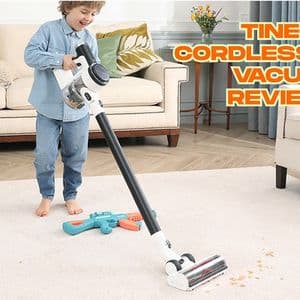What Makes a Top Hoover in Today’s Market?
When it comes to cleaning, vacuum cleaners—often referred to as hoovers—are essential household tools. But not every vacuum performs the same, and not every model suits every home. So what defines a top hoover in today’s marketplace?
Let’s explore the key features, design considerations, and cleaning technologies that distinguish high-performing vacuums from the rest.
The Evolution of Vacuum Technology
Vacuum cleaners have come a long way from bulky, noisy machines. Modern designs focus on:
-
Portability and ease of use
-
Advanced filtration systems
-
Enhanced battery life in cordless models
-
Specialized attachments for different surfaces
These improvements have changed what people expect from a top-performing vacuum, especially as home environments have diversified.
Key Features That Define a Top Hoover
What should you look for when determining vacuum quality? Here’s a breakdown of essential characteristics.
Strong Suction Power
A top hoover must effectively lift dirt, debris, and pet hair from a variety of surfaces. Suction is typically measured in air watts (AW) or kilopascals (kPa). Strong suction is crucial for:
-
High-pile carpets
-
Deep crevices
-
Edge-to-edge cleaning
Vacuum cleaners that maintain consistent power—even as their dustbin fills—offer a clear advantage.
Filtration System
A good filtration system doesn’t just protect the motor; it also improves indoor air quality. HEPA filters are ideal for allergy sufferers, capturing particles as small as 0.3 microns.
Weight and Maneuverability
Ease of use matters. Lightweight models with swivel steering are ideal for navigating around furniture and tight corners.
Versatility Across Floor Types
Hardwood floors, carpets, tiles—each has different cleaning requirements. A top vacuum should adapt to all surfaces without causing damage or losing suction.
This is especially important when selecting the best Dyson cordless vacuum for hardwood floors, which must combine gentle brush rolls with powerful suction to prevent scratches while maintaining cleanliness.
Bagged vs. Bagless Models
Pros of Bagged Vacuums:
-
Better for allergy control
-
More hygienic disposal
-
Often higher dust capacity
Pros of Bagless Vacuums:
-
Lower ongoing costs
-
Easier to monitor dirt levels
-
More environmentally friendly
Choosing between these depends on personal preferences and household sensitivities.
Corded vs. Cordless: Which Is Better?
Corded vacuums tend to provide constant power, making them ideal for deep cleaning. Cordless models, however, offer mobility and convenience—perfect for quick daily maintenance.
A top hoover often merges both worlds by using high-capacity batteries and fast-charging capabilities. Look for:
-
Runtime (measured in minutes)
-
Recharge time
-
Battery type (lithium-ion is most efficient)
Read more: Best Vacuum for Stairs Cordless
Noise Levels and Energy Efficiency
A top vacuum isn’t just powerful—it’s also quiet. Units that operate under 70 decibels are generally considered quiet, which is beneficial for shared living spaces.
Energy efficiency, often marked by energy ratings (especially in the EU), ensures that power doesn't come at the cost of high electricity bills.
Specialized Attachments and Tools
Attachments can drastically improve vacuuming results. Look for:
-
Motorized brush heads for carpets
-
Soft rollers for hardwood floors
-
Crevice tools for tight areas
-
Pet hair tools for upholstery
Each accessory extends the functionality of the vacuum, making cleaning more efficient and tailored to the user’s home.
Maintenance and Longevity
No matter how advanced a vacuum is, it requires upkeep. Filters need to be cleaned or replaced. Brush rolls must be untangled. A top hoover is designed for easy maintenance, with accessible parts and clear instructions.
Price vs. Performance: Finding the Balance
Not all expensive vacuums perform well, and not all budget vacuums are subpar. The trick lies in:
-
Identifying key needs (pet hair, stairs, allergies, etc.)
-
Matching features to those needs
-
Reading verified performance tests and consumer reports
This is where many users turn to resources like Britech cordless vacuum reviews, which offer insight into how well a product works in real-life situations. These reviews can help filter out marketing noise and highlight actual performance metrics.
Sustainability and Eco-Friendly Designs
Eco-conscious consumers often seek vacuums that:
-
Use recyclable materials
-
Have long-lasting components
-
Avoid unnecessary plastic packaging
Some brands even offer refurbishing or trade-in programs to minimize environmental impact.
Common Mistakes When Choosing a Hoover
Let’s pause and cover a few frequent pitfalls:
Ignoring Floor Type Compatibility
A vacuum that works well on carpet may not be suitable for hardwood or tile. Always check if the model supports multiple surfaces.
Overlooking Filter Quality
Even if suction is strong, poor filtration can blow allergens back into the air—especially concerning in households with pets or children.
Prioritizing Design Over Functionality
Sleek design is great, but performance should always come first. A stylish unit with weak suction or poor battery life won't serve you well.
Comparing Models: What to Prioritize
Here’s a quick guide to evaluating options:
| Feature | Importance |
|---|---|
| Suction Power | Critical |
| Battery Life (cordless) | High |
| Filter Type | High |
| Noise Level | Medium |
| Accessories Included | Medium to High |
| Weight and Handling | High |
| Dustbin or Bag Capacity | Medium |
This matrix helps identify what matters most based on your specific cleaning needs.
Final Thoughts
The definition of a top hoover is ultimately personal. It depends on how you live, what surfaces you clean, and what level of convenience you expect. But across the board, the best vacuums today share several qualities: powerful performance, effective filtration, versatility, and ease of use.
Whether you’re deep cleaning carpets or maintaining spotless hardwood floors, selecting the right vacuum can dramatically improve your home’s cleanliness and air quality.
Take the time to evaluate your needs, avoid common pitfalls, and focus on what will actually make cleaning easier—not just what looks good on paper.










